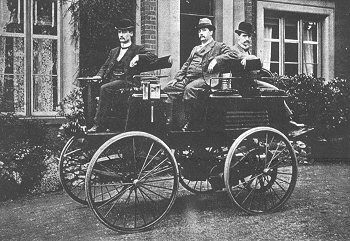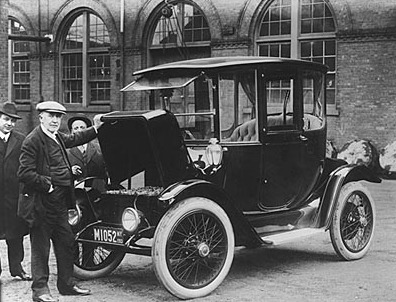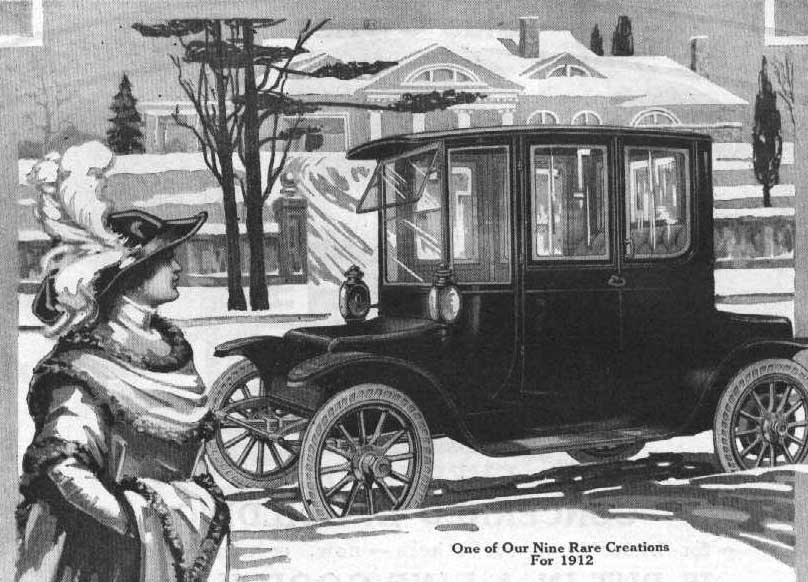
1. Early Development of Electric Cars
The development of electric cars began in the early 19th century, with several key figures contributing to its progress:
- Robert Anderson: A Scottish inventor, Anderson is often credited with creating the first crude electric vehicle in the 1830s. His electric carriage was powered by non-rechargeable primary cells, making it a rudimentary and early example of electric propulsion.
- Gustave Trouvé: In 1881, this French inventor demonstrated a working three-wheeled electric car. Trouvé’s vehicle was powered by a rechargeable battery, marking a significant step forward in electric mobility.
- Werner von Siemens: In the 1870s, Siemens, a German engineer, made significant advancements in electric traction, although his work focused more on electric trams and locomotives rather than personal vehicles.
- Thomas Parker: An English inventor, Parker is credited with building one of the first practical electric cars in 1884. His vehicle was powered by high-capacity rechargeable batteries, showcasing the potential for electric cars as a viable transportation method.

- Andreas Flocken: A German engineer, Flocken created the first real electric car in 1888. His Flocken Elektrowagen is often considered the world’s first true electric vehicle, representing a significant leap in electric car technology.
- Walter Bersey: An English engineer, Bersey introduced electric cabs to the streets of London in 1897. Known as “Bersey cabs,” these vehicles marked one of the earliest commercial applications of electric cars.
2. 20th Century Electric Car Manufacturers in the U.S.
During the early 20th century, electric vehicles (EVs) saw a surge in popularity, with several manufacturers emerging in the United States:
- Anthony Electric: Based in New York, Anthony Electric was among the early manufacturers of electric vehicles, producing a range of electric trucks and buses.
- Baker Motor Vehicle Company: Founded in Cleveland, Ohio, Baker was one of the most successful early electric car manufacturers, known for its luxury electric cars.
- Columbia Electric: Columbia was a significant player in the early electric car market, producing both passenger cars and commercial vehicles.
- Anderson Electric Car Company: Also known as Detroit Electric, Anderson was a leading manufacturer of electric cars in the U.S. during the early 20th century. Their vehicles were popular among affluent customers.
- Edison Electric: While Thomas Edison himself didn’t manufacture cars, his work on improving batteries played a crucial role in the development of early electric vehicles.

- Riker Electric Vehicle Company: Founded by Andrew Riker, this company was known for producing electric race cars and trucks.
- Milburn Wagon Company: Milburn was another significant manufacturer of electric cars, known for their lightweight electric vehicles.
- Bailey Electric: Based in Amesbury, Massachusetts, Bailey Electric produced a range of electric vehicles that were popular in the early 1900s.
- Detroit Electric: A division of Anderson, Detroit Electric became synonymous with early electric vehicles, producing more than 13,000 cars between 1907 and 1939.

3. Modern Electric Cars (1990s to Present)
The resurgence of interest in electric vehicles began in the 1990s, driven by environmental concerns and advancements in technology:
- California Air Resources Board (CARB): In the 1990s, CARB introduced regulations that pushed for the development of zero-emission vehicles, leading to the creation of modern electric cars.
- Tesla Roadster (2004): Tesla Motors, founded by Elon Musk and others, introduced the Roadster in 2004. It was the first highway-legal electric car to use lithium-ion battery cells and had a range of over 200 miles.
- Renault-Nissan Alliance: This partnership has been a major player in the EV market, with models like the Nissan Leaf, which became the world’s best-selling electric car at one point.
- Mitsubishi i-MiEV: Launched in 2009, the i-MiEV was one of the first mass-produced electric cars and was sold in several markets globally.
- Nissan Leaf: Launched in 2010, the Leaf became one of the most successful electric cars worldwide, known for its affordability and practicality.
- Tesla Model S: Introduced in 2012, the Model S set new standards for electric cars with its long range, high performance, and advanced features.
- Tesla Model 3: Launched in 2017, the Model 3 is Tesla’s most affordable electric car and has been crucial in bringing electric vehicles to the mass market.
- China EV Market: China has become the largest market for electric vehicles, with companies like BYD and NIO leading the charge. Government policies and incentives have driven the rapid adoption of EVs in China.
- VinFast: A Vietnamese automaker, VinFast has recently entered the global EV market, focusing on producing electric cars for both domestic and international markets.
5. Economic and Environmental Aspects of EVs
Economic Aspects:
- Cost of Ownership: Electric vehicles generally have a higher upfront cost compared to internal combustion engine (ICE) vehicles, but they benefit from lower operating costs due to cheaper electricity and reduced maintenance.
- Incentives: Governments worldwide offer various incentives, including tax credits, rebates, and subsidies, to encourage the adoption of EVs.
- Energy Efficiency: EVs are more energy-efficient than ICE vehicles, converting about 60% of the electrical energy from the grid to power at the wheels, compared to about 20% for gasoline vehicles.
Environmental Aspects:
- Reduction in Emissions: EVs produce zero tailpipe emissions, significantly reducing urban air pollution and greenhouse gas emissions when powered by renewable energy sources.
- Battery Production Impact: The production of EV batteries, especially lithium-ion, has environmental impacts, including resource extraction and manufacturing emissions. However, the overall lifecycle emissions of EVs are still lower than those of ICE vehicles.
5. Performance and Public Opinion on EVs
Performance:
- Energy Efficiency: EVs are more efficient than traditional vehicles, with higher energy conversion rates and regenerative braking systems that recover energy during deceleration.
- Range: While early EVs had limited range, modern models like the Tesla Model S can travel over 300 miles on a single charge, addressing range anxiety for many consumers.
Public Opinion:
- Safety: EVs are generally considered safe, with strict regulations governing battery safety and crash performance. However, concerns about battery fires and high-voltage systems remain.
- Battery Life: Consumers are often concerned about the lifespan of EV batteries. Most manufacturers offer warranties of 8 years or 100,000 miles, and advancements in battery technology are continually extending battery life.
- Home Charging: The convenience of home charging is a major advantage for EV owners, allowing them to charge overnight and avoid trips to gas stations.
- Public Charging: The availability and reliability of public charging infrastructure are critical factors in EV adoption. While charging networks are expanding, range anxiety and charger accessibility remain concerns for potential buyers.
- Lifespan: Modern EVs are expected to have a similar lifespan to ICE vehicles, with many lasting over 200,000 miles with proper maintenance.
This overview captures the key historical developments, economic and environmental aspects, and public opinion on electric vehicles, illustrating the evolution and growing acceptance of EVs in the modern world.
-Nguyễn Bách Khoa-
